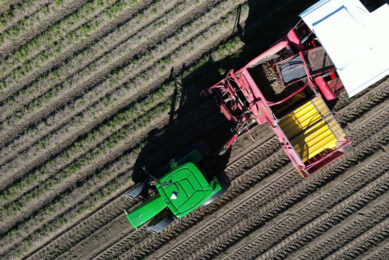Farmers: Unlock the treasure trove – Why Ag-data is your greatest asset

In the heart of every farm lies a treasure trove of data waiting to be unlocked, a direct result of the increasing prevalence of sensor technology. Farmers must become more aware of the value of the data they collect throughout their operations.
The recent lawsuit between The New York Times and Microsoft over the alleged scraping of The New York Times’ published work underscores the critical importance of data and AI in agriculture. Innovative AI-driven technologies rely on vast datasets to deliver insights and solutions, which are crucial when applied to modern farming practices.
Maximizing the strategic potential of farm data
A significant challenge in maximizing the value of farm data lies in integrating information from diverse sources into a single repository that includes data on all factors influencing crop growth and yield. Currently, each sensor, IoT, or machine manufacturer typically pursues this integration independently or uses encryption protocols to deter third-party efforts. However, this fragmented approach results in various single-issue solutions and all-in-one systems, which must develop their own IoT solutions alongside existing systems, leading to unnecessary costs. Farmers should organize themselves into agricultural cooperatives to negotiate fair data-sharing structures and establish data ownership rules before losing their strategic advantage as a source of information.
While a growing number of farmers are embracing data-driven solutions, the focus is heavily on operational advantages rather than fully exploiting data accumulation. The vision should broaden towards recognizing data as an asset rather than a byproduct, as its value extends beyond operational advantages when shared throughout the food chain.
Text continues below picture

The Impact of Farm-Level data across the ecosystem
The exponentially increasing amount of farm-level data is not only valuable for individual farmers but is a resource for all stakeholders in the agricultural ecosystem. This data can provide value in several ways:
- Policy Making: Improved by closing the gap between bureaucratic aspirations and the harsh realities of farming.
- Insurance: Companies can use it to assess and mitigate risks, ensuring more accurate premium calculations.
- Food Processors: Gain insights into the quality and quantity of incoming produce, enabling streamlined supply chain management.
- Input Suppliers: Optimize the efficiency of their products and develop new customized services tailored to each farm’s unique needs and conditions.
- Certification Companies: Improve the reliability of their services by basing sustainability goals on IoT information rather than manual records.
While farm data often creates mutual benefits for farmers and partners in the agricultural chain, competitive concerns arise when this data is used for sales strategies rather than product innovation.
Balancing Insights and ownership: striking a balance for farmers
Key players in the agro-industry have moved into this new market space with their own solutions or through acquisitions, offering farmers digital platforms for data collection, analysis, and visualization. While these tools provide valuable insights, they also raise concerns about data ownership and the potential erosion of farmers’ control over their data. Farmers should carefully consider the implications of purchasing all-in-one solutions from large agricultural or tech companies, as relying solely on these platforms could compromise their competitive balance.
These platforms could improve pricing algorithms by analyzing farm-level data, empowering the implementation of dynamic pricing strategies customized to the unique requirements of individual farmers and prevailing market conditions. By utilizing real-time operational data, companies can bolster their dominance in other segments by establishing more precise and adaptable pricing models. This enables them to capture varying levels of willingness-to-pay among smaller cohorts of farmers, thus further optimizing profit margins and solidifying their market position. While price algorithms themselves are not inherently illegal, experiences from other industries have shown that algorithms can potentially facilitate price-fixing activities among competitors. This exploitation of price algorithms is widely recognized as anticompetitive, often resulting in price gouging and detriment to consumers. By tapping into demand-side operational data, companies could amplify the effectiveness of supply-side price-fixing tactics.
Instead, when buying data-driven solutions, farmers should explore collaborative approaches, such as agricultural cooperatives, to retain ownership of their data and negotiate fair sharing structures that benefit all stakeholders involved.
In conclusion, treating harvested information as an asset and adopting a cooperative approach can help farmers unlock the full potential of their data, ensuring they remain competitive and influential within the agricultural ecosystem. By doing so, they can transform farm data from a byproduct into a valuable resource that drives innovation and growth across the entire industry.
Join 17,000+ subscribers
Subscribe to our newsletter to stay updated about all the need-to-know content in the agricultural sector, two times a week.



